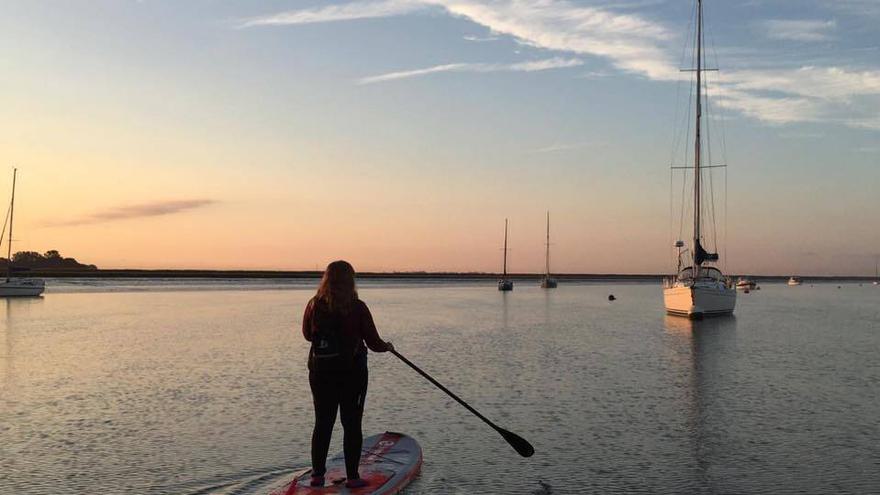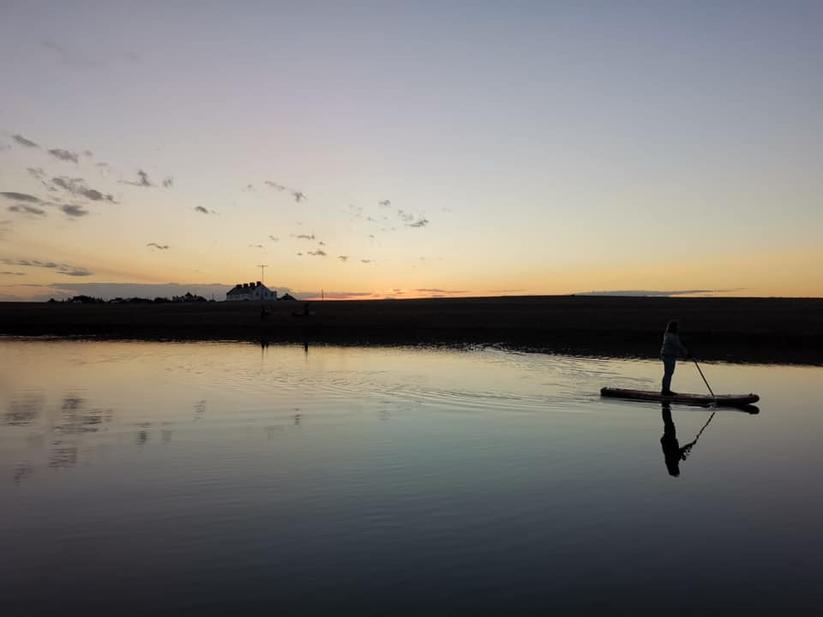10 November, 2021
Contributing editor Natasha Sones gives us the low down on winter kit for stand-up paddleboarding.

Since the outbreak of Covid-19 stand-up paddleboarding (SUP) has become increasingly popular with lots more people buying SUP boards. The summer was the perfect time for going out on the water, with the sunny weather and long evenings. But just because the temperature has got colder doesn’t mean that you have to stop paddling. You just need to be prepared with the right gear.
What to wear
You may want to wear a wetsuit, either shorty or full length wetsuit. If temperatures drop below 10°C to around 9°C or 8°C then you will probably need a wetsuit of 5mm thickness. Another option is a dry suit which will keep you warmer than a wetsuit and is easier to paddle in, but more costly to buy. Alternatively you can just wear leggings, a base layer, a top and a waterproof jacket. If it is really cold you could add in a fleece or thermal base layer.
A must have for winter is a woolly hat as you lose a lot of heat from the top of your head, as well as neoprene gloves, socks and boots. The gloves will protect your hands when paddling in the elements, make sure you have enough flexibility to grip the paddle. The boots will keep your feet warm and protect them when you walk to and from the water. You can wear neoprene socks with them for extra warmth.
Wear appropriate clothing, avoid heavy woollen garments for example which would get very heavy in the water if you fell in. The water is usually cold and if you capsize/fall in, you may suffer cold water shock. Make sure you have warm, comfy clothing to put on afterwards.
Other kit
It goes without saying you will need a SUP board and paddle! Your board will probably come with an ankle leash. It is important to always keep this on when you are paddling so the board doesn’t float away. British Canoeing advises that wearing a quick release leash instead of an ankle one. This is because if you become snagged on an obstacle and the current is strong, you will easily be able to detach yourself from the board.
Safety first
Always do your research and take sensible precautions. Before going out, check the weather conditions and tide times. A good website to use is TideTimes.org.uk and a helpful app is Windy. The app What3Words lets you share your exact location – even if you’re in the middle of the sea or on a remote river. Try not to paddle alone, go with a friend or a group if you can to stay safe.
You should definitely wear a buoyancy aid as this will keep you afloat and give you time to recover if you should fall in. Always carry a mobile phone in a waterproof case too.
Have fun and happy paddling!
Author Bio
Natasha Sones has an outside family adventure travel blog: www.natashasoneseditorial.com/blog. With three children, three dogs and a husband she enjoys days out, holidays, camping, walking, paddleboarding, kayaking, stargazing and much more! Follow her blog or her Instagram account: @natashastarseeker if you love family lifestyle articles.


I have an outdoor adventures blog. Having three children, I am particularly interested in getting outside with my family. I aim to make every day an adventure, especially with my children, husband, dogs and friends. From exploring new cities to being in our campervan with the dogs, we like an adventure. We live near the sea and forest and explore every day.
Most recent articles by Natasha Sones

Set in Feanedock, this Festival is based in a 70-acre woodland site on the Leicestershire/Derbyshire border at the heart of the National Forest.

Want to meet up with like-minded adventurers, try some new activities and get inspired? Try these festivals in the UK.
Wild swimming is a popular pastime but it can be tricky to know where to start gaining the knowledge and confidence to begin.
Most recent articles in WATER
Wild swimming is a popular pastime but it can be tricky to know where to start gaining the knowledge and confidence to begin.

Did you miss out on attending this year's National Outdoor Expo? Or simply feeling the blues from the show and want even more EXCLUSIVE content? The National Outdoor PodShow is the one-stop-shop for those who love the outdoors.

National Outdoor PodShow sponsors YONDA are giving you the opportunity to win the ultimate swimmers bundle. Enter now!